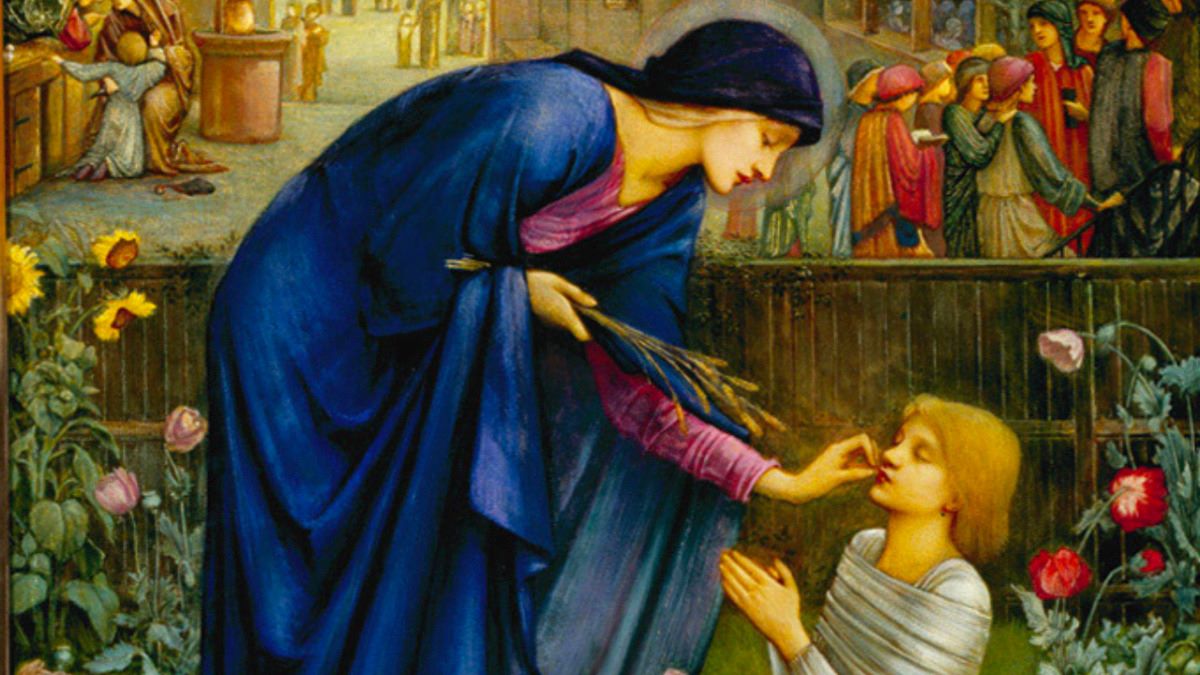
Ever wondered who the Prioress is in Geoffrey Chaucer's "The Canterbury Tales"? The Prioress, also known as Madame Eglantine, is a fascinating character with many layers. She is a nun who heads her convent, but there's more to her than meets the eye. With her impeccable manners, love for animals, and a penchant for speaking French, she stands out among the pilgrims. Her tale, filled with religious fervor and a touch of anti-Semitism, reflects the complexities of medieval society. Curious about her quirks and contradictions? Let's dive into 20 intriguing facts about the Prioress that will give you a deeper understanding of this enigmatic figure.
Prioress: A Glimpse into Medieval Life
The Prioress, a character from Geoffrey Chaucer's "The Canterbury Tales," offers a fascinating look into medieval society. Her story and character reveal much about the era's religious, social, and cultural norms. Here are some intriguing facts about the Prioress.
-
The Prioress's Real Name
Her name is Madame Eglantine. Eglantine is a type of wild rose, symbolizing her delicate and refined nature. -
Her Role in the Church
As a prioress, she was the head of a convent. This position gave her significant authority over the nuns in her care. -
Fluent in French
She speaks French fluently, but with a provincial English accent. This detail highlights her education and social aspirations. -
Her Table Manners
Chaucer describes her as having impeccable table manners. She never lets a morsel fall from her lips and wipes her mouth so clean that no trace of grease is seen. -
Her Compassion for Animals
She is known for her love of animals, especially small dogs. She feeds them roasted meat, milk, and fine white bread.
The Prioress's Appearance and Attire
Chaucer's detailed description of the Prioress's appearance and clothing provides insight into her personality and status.
-
Elegant Appearance
She is described as elegantly dressed, with a well-formed nose, gray eyes, a small mouth, and a broad forehead. -
Wears a Wimple
The wimple, a cloth covering the neck and chin, signifies her religious devotion and modesty. -
Her Rosary
She carries a rosary made of coral beads, with green beads in between. The rosary ends with a golden brooch inscribed with "Amor vincit omnia" (Love conquers all). -
Her Brooch
The golden brooch she wears is a significant detail. It suggests a worldly concern with appearance and status, contrasting with her religious vows.
The Prioress's Tale
The Prioress's tale in "The Canterbury Tales" reflects her religious devotion and the anti-Semitic sentiments of the time.
-
A Devout Story
Her tale is a devout story about a young Christian boy murdered by Jews for singing a hymn to the Virgin Mary. -
Miraculous Elements
The tale includes miraculous elements, such as the boy continuing to sing even after his throat is slit. -
Reflects Anti-Semitism
The story reflects the prevalent anti-Semitic attitudes of medieval Europe, portraying Jews in a negative light. -
Emphasis on Virgin Mary
The tale emphasizes the Prioress's devotion to the Virgin Mary, a central figure in medieval Christianity.
The Prioress's Social Status
Her social status and behavior reveal much about the expectations and limitations placed on women in medieval society.
-
Noble Birth
She is likely of noble birth, as suggested by her refined manners and education. -
Social Aspirations
Her behavior and attire indicate a desire to be seen as part of the upper class, despite her religious vocation. -
Limited Mobility
As a woman and a nun, her mobility and freedom are limited. Her pilgrimage to Canterbury is a rare opportunity for travel.
The Prioress's Personality
Chaucer's portrayal of the Prioress offers a nuanced view of her personality, blending piety with vanity.
-
Gentle and Dignified
She is gentle and dignified, with a soft voice and a calm demeanor. -
Sentimental Nature
Her sentimental nature is evident in her weeping at the sight of a dead mouse caught in a trap. -
Vanity
Despite her religious vows, she exhibits vanity through her concern with appearance and social status. -
Contradictory Character
The Prioress is a contradictory character, blending genuine piety with worldly concerns. This complexity makes her one of Chaucer's most intriguing characters.
Final Thoughts on Prioress
Prioress, a fascinating figure from Geoffrey Chaucer's "The Canterbury Tales," offers a unique glimpse into medieval society. Her character, a nun with aristocratic tendencies, highlights the complexities of religious life during that era. Through her, Chaucer subtly critiques the church's influence and the blending of sacred and secular worlds.
Understanding Prioress helps us appreciate Chaucer's wit and the historical context of his work. Her portrayal reminds us that even in the 14th century, people grappled with identity, duty, and societal expectations.
Next time you dive into "The Canterbury Tales," keep an eye out for Prioress. Her story, though centuries old, still resonates today. Whether you're a literature enthusiast or just curious about history, Prioress offers a rich tapestry of insights into human nature and medieval life.
Was this page helpful?
Our commitment to delivering trustworthy and engaging content is at the heart of what we do. Each fact on our site is contributed by real users like you, bringing a wealth of diverse insights and information. To ensure the highest standards of accuracy and reliability, our dedicated editors meticulously review each submission. This process guarantees that the facts we share are not only fascinating but also credible. Trust in our commitment to quality and authenticity as you explore and learn with us.


